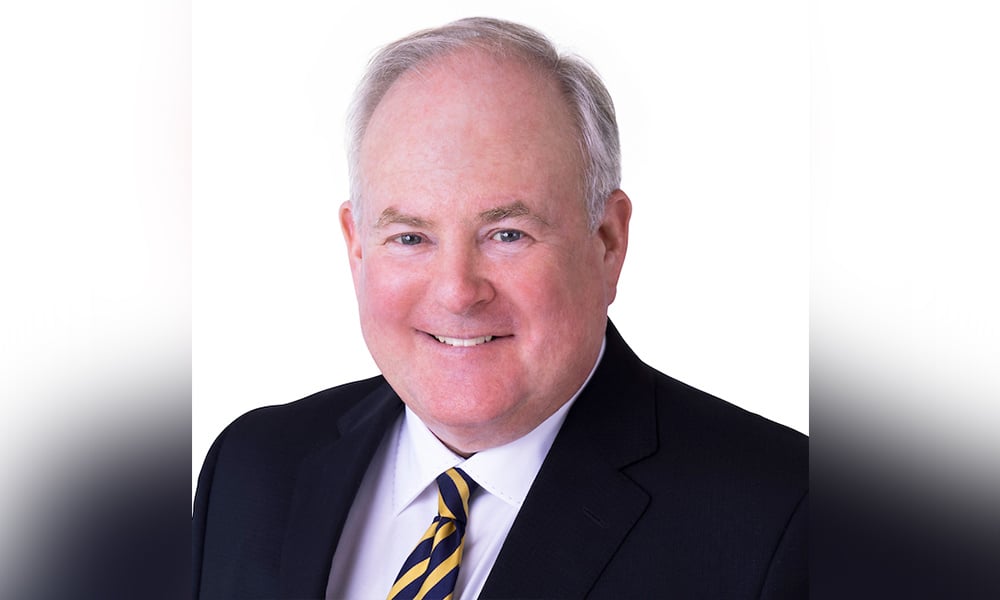The time to position portfolios against inflation has passed, says veteran portfolio manager

The Bank of Canada’s decision yesterday to lift its overnight target rate by 75 basis points wasn’t the strongest move in its ongoing inflation campaign, but it was still historic.
With that decision, the BoC’s overnight rate now stands at 3.25%, exceeding 3% for the first time in more than 14 years. The move comes after the central bank’s surprise full-percentage point increase in July.
For Roderick Mahrt, senior wealth advisor and senior portfolio manager at Wellington-Altus Private Wealth, the BoC’s latest announcement was hardly unexpected.
“Seventy-five basis points was the consensus,” Mahrt, a seasoned veteran with more than 30 years of experience in the financial services industry, told Wealth Professional. “Today's rate of 3.25% now makes us the highest rate among all the advanced economies. And looking at what happened in the bond market today, the general forecast seems to be for rates to go as high as 3.5% to 3.75%.”
Things could get even tighter. Both the Federal Reserve and the BoC have pledged to bring inflation down to their target rate of about 2%. At this point, the mercury seems to be dipping; last month, Statistics Canada report headline inflation reached 7.6% in July, a mild slowdown from 8.1% in June. In the U.S., CPI readings eased from 9.1% to 8.5% over the same period.
With global forces like the Russia-Ukraine war, China’s zero-COVID policy, and lingering supply-chain issues working against them, every bit of progress made by the U.S. and Canada to tame inflation is significant. But once CPI readings descend to 6%, policymakers could run into a wall.
“The real heavy lifting will be when they try to go from 6% down to 2%,” Mahrt says. “We feel that they may not pause at 3.5% or 3.75%. They may have to go to 4%.”
In its latest decision, the BoC indicated that it would monitor the data closely to assess how much higher interest rates need to go to return inflation to target. To Thomas Reithinger, Fixed Income Portfolio Manager at Capital Group, the central bank’s statement accompanying its decision struck a more moderate tone compared to its U.S. counterpart.
“In contrast to the Federal Reserve, the Bank of Canada did not mention that they need to front-load rate hikes or be ‘forceful,’” said in an emailed statement. “The first part of the statement [from the BoC] reads a bit more cautious on the Canadian economy than the previous one, showing that the tightening is working but also means they can slow down the rate hikes into early next year.”
With echoes of the Volcker-era crusade against inflation still fresh in their memories, North American central bankers are doing whatever it takes to bring price stability back to the markets. That creates a very real possibility of stagflation or recession, which Mahrt says portfolio managers should prepare for.
“For any central bank to stick a soft landing at this point would be incredible, but highly unlikely,” he says. “The way you structure a portfolio for inflation is very different from how you would structure a portfolio for a recessionary environment.”
Anticipating today’s market environment, Mahrt says he and his team started peeling back bond exposures from client portfolios about a year and a half ago, and changing their equity focus. Today, they have a roughly 23% weighting in cash, and scaled back both equity and bond positions to move into alternatives such as commodity-trending strategies, long-short commercial credit, and structured products.
“The traditional 70-30 or 60-40 equity-to-bond portfolio that worked so well for the last 30 years is not going to work for the next 30. It's not going to work for the next 10,” he says. “Since January this year, people largely went into bonds. And they've been hurt as well, because both the stock and bond markets have gone off in this bear market.
“I've gone through numerous bull markets and bear markets and recessions,” Mahrt adds. “There is a beginning, a middle, and an end to these events. And it's what you do with your portfolios today that will help you get through and prosper in the end.”



